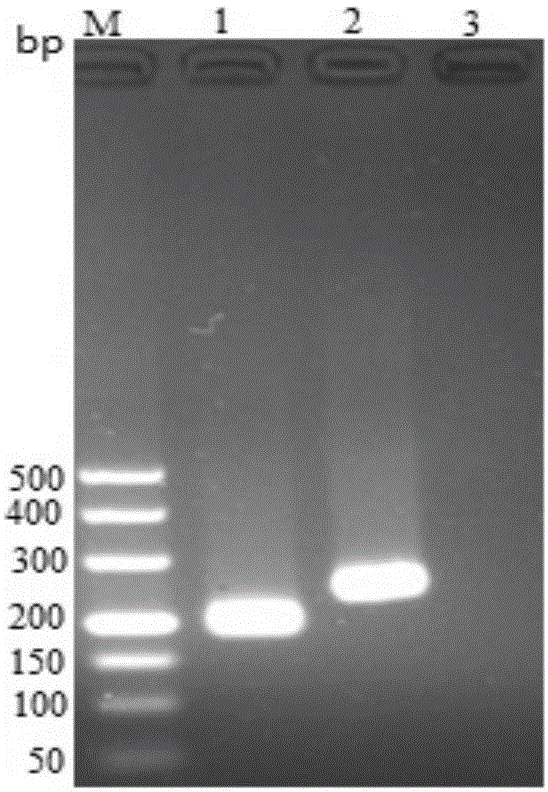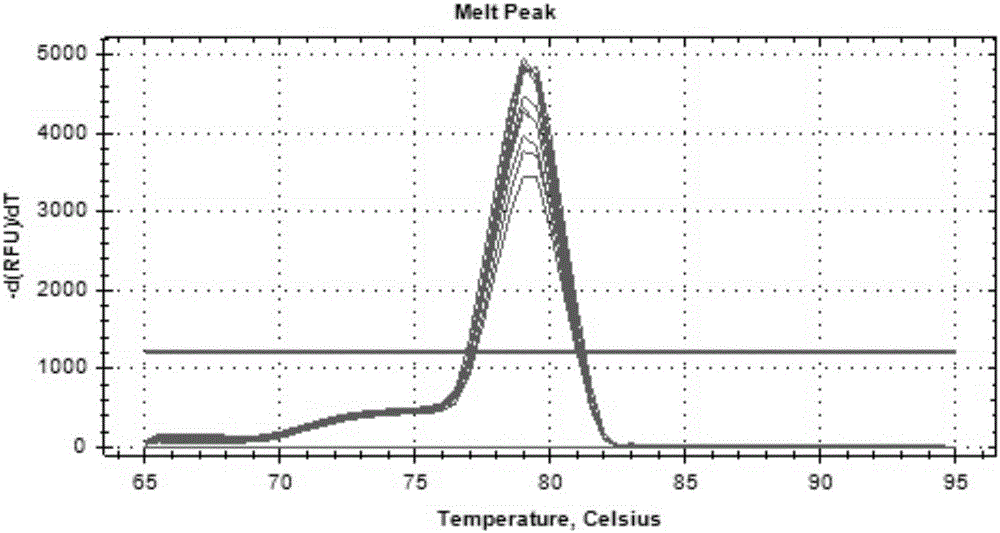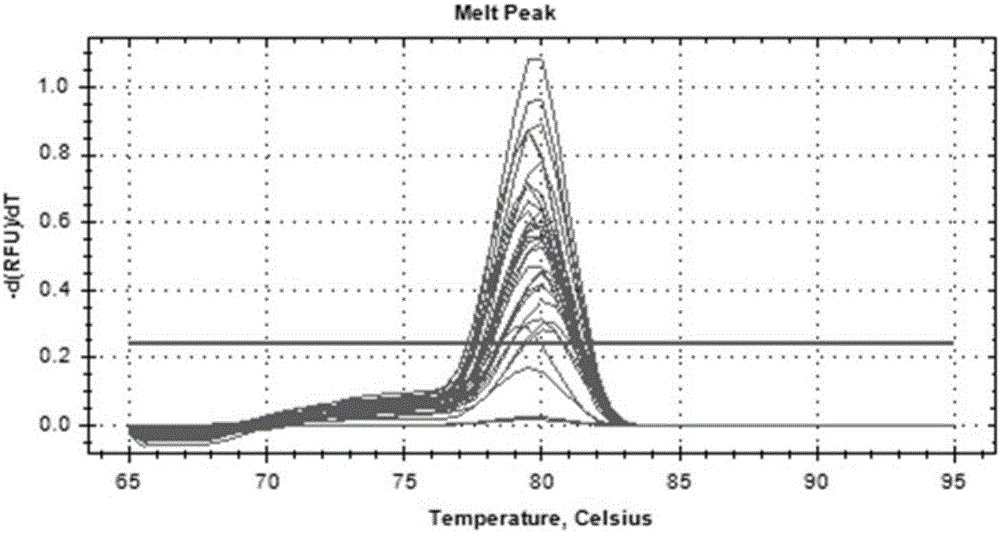Fluorescence quantitative PCR kit for detecting porcine epidemic diarrhea virus and use thereof
A porcine epidemic diarrhea and fluorescence quantitative technology, which is applied in the field of molecular biology, can solve the problems of inability to meet clinical diagnosis and insufficient sensitivity, and achieve the effects of effective detection, good repeatability and good application prospects.
- Summary
- Abstract
- Description
- Claims
- Application Information
AI Technical Summary
Problems solved by technology
Method used
Image
Examples
Embodiment 1
[0046] Embodiment 1 Preparation of fluorescent quantitative PCR kit of the present invention
[0047] 1. Experimental method
[0048] 1.1 Primer design
[0049] According to the analysis of the sequences of the virulent strain (AF353511) and the attenuated strain (EU054930), the ORF3 gene was selected as the target sequence to design and synthesize a pair of specific fluorescent quantitative primers (see Table 1), and the primers amplified the virulent strain and the attenuated strain The obtained fragments have different sizes, among which a 238bp fragment is obtained by amplifying the strong virus strain, and a 187bp fragment is obtained by amplifying the weak virus strain. Therefore, it can also be used for differential diagnosis of strong and weak PEDV strains.
[0050] Among them, ORF3-F / ORF3-R were used to construct standard plasmids; F1 / R1 were used as RT-PCR detection primers.
[0051] Table 1 Fluorescence quantitative primers
[0052]
[0053] 1.2 Establishment ...
experiment example 1
[0088] Experimental Example 1 Specificity Test
[0089] 1. Experimental method
[0090] Porcine transmissible gastroenteritis virus (TGEV), Japanese encephalitis virus (JEV), porcine rotavirus (PoRV), porcine reproductive and respiratory syndrome virus (PRRSV), porcine circovirus (PCV), The total RNA of porcine parvovirus (PPV) and porcine pseudorabies virus (PRV) was reverse-transcribed into cDNA, and carried out together with porcine epidemic diarrhea virus (PEDV) for EG-qRT-PCR, and a negative control (template for negative control) was set up at the same time Sterilized ddH was used 2 O)
[0091] The fluorescence quantitative reaction system is the same as in Table 2, and the reaction program is: 95°C for 30s; 95°C for 5s, 57°C for 10s, 40 cycles; finally a melting curve is generated.
[0092] The specificity of the kits and methods of the invention is evaluated.
[0093] 2. Experimental results
[0094] See Figure 9-10 .
[0095] Depend on Figure 9-10 It can be ...
experiment example 2
[0097] Experimental Example 2 Sensitivity Test
[0098] 1. Experimental method
[0099] to 10 -3 ~10 6 copies / μL standard plasmid as a template (initial plasmid concentrations of strong and weak strains were 4.79×10 11 copies / μL, 5.17×10 11 copies / μL, diluted from initial concentration to 10 -3 copies / μL, choose 10 -3 ~10 6 copies / μL for sensitivity experiment), EG-qRT-PCR detection was carried out, and its sensitivity was evaluated.
[0100] The EG-qRT-PCR reaction system is as follows:
[0101]
[0102] Reaction program: 95°C for 30s; 95°C for 5s, 57°C for 10s, 40 cycles; finally generate a melting curve.
[0103] 2. Experimental results
[0104] At a concentration of 4.79×10 -3 copies / μL~4.79×10 6 copies / μL, 5.17×10 -3 copies / μL~5.17×10 6 Copies / μL plasmid standards were used as templates for EG-qRT-PCR, and the lower limit of detection of strong toxicity was 4.79×10 0 copies / μL( Figure 11 ). The lower limit of detection of attenuated virus is 5.17×10 0...
PUM
| Property | Measurement | Unit |
|---|---|---|
| PCR efficiency | aaaaa | aaaaa |
Abstract
Description
Claims
Application Information
 Login to View More
Login to View More - R&D
- Intellectual Property
- Life Sciences
- Materials
- Tech Scout
- Unparalleled Data Quality
- Higher Quality Content
- 60% Fewer Hallucinations
Browse by: Latest US Patents, China's latest patents, Technical Efficacy Thesaurus, Application Domain, Technology Topic, Popular Technical Reports.
© 2025 PatSnap. All rights reserved.Legal|Privacy policy|Modern Slavery Act Transparency Statement|Sitemap|About US| Contact US: help@patsnap.com



